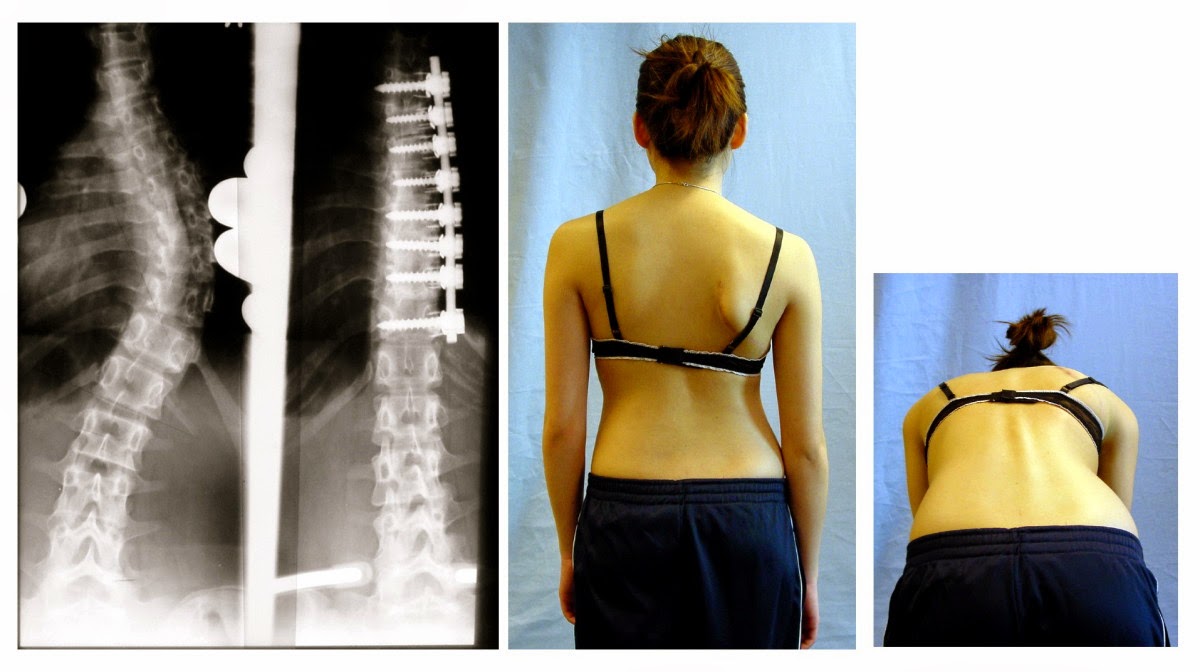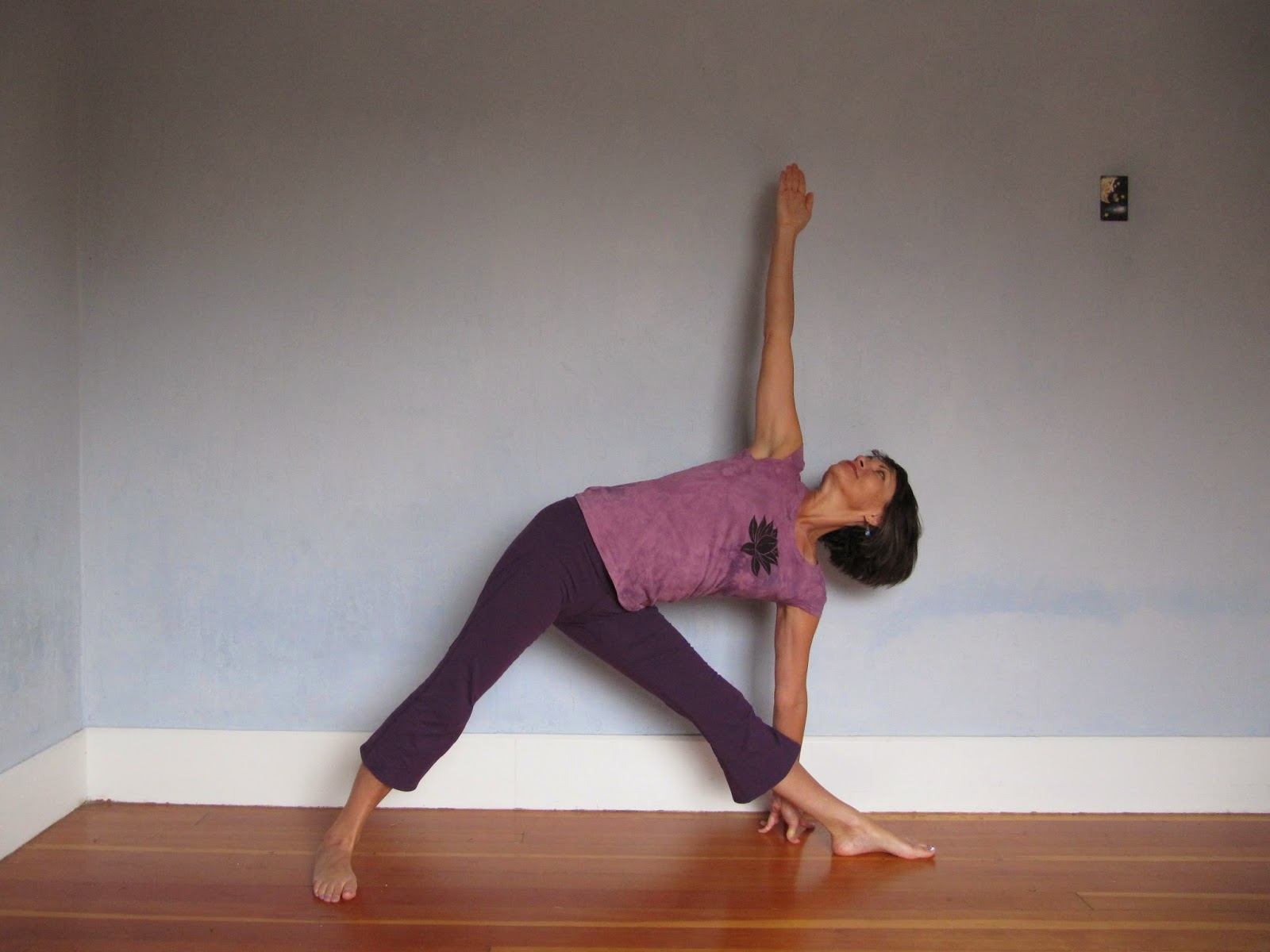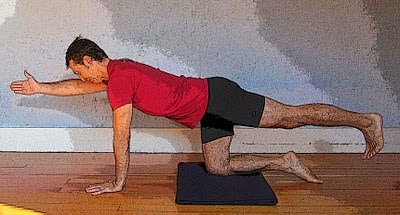
Q: I have a new student in my basic class who has a rod in her back due to scoliosis. Has anyone had this experience and have any suggestions? She is young and healthy.
A: Some of our readers might think that this is an uncommon occurrence in a yoga class, but I myself have had several students over the years with scoliosis who had undergone a “fixation” procedure to try to improve the straightness of their spine, to try to prevent the abnormal curves of their scoliotic spine from getting any more dramatic, or to reduce the pain from the scoliosis.
The first successful procedure of this kind was the placement of a “Harrington rod”—named after the doctor who pioneered the technique—along the length of the spine, usually from the upper chest (thoracic spine) down into the area of the lower back (lumbar spine). The rod is then “fixed” to the spine via wires and screws. The rod essentially immobilizes the part of the spine it is connected to from moving in any direction (see All About the Spine: Anatomy and Movements). Since the introduction of that surgical technique, several others have also been developed and are used today.
So, once a person with scoliosis (see Friday Q&A: Scoliosis) has had this procedure done, how would that affect their yoga practice? The section of the spine that is fixed to the rod is now not likely to change shape over time, but has very little movement possibilities. It turns out that the joint at the top of the spine directly above the last fixed vertebra and the joint at the bottom of the spine just below the last fixed vertebra are now the spots where the spine can still move. That means that these two areas are where forward bending, back bending, side bending, and twisting movements might be able to actually take place. But this puts an excessive burden on those two areas, and they run the risk of being overworked and becoming a future source of dysfunction and discomfort!
Fortunately for me (and you!) I ran into a local expert on yoga and scoliosis, Sandra Razieli, at the farmer’s market the other day and we talked for a while about her approach to working with this situation. I should mention that Sandra herself has scoliosis, and has used yoga to address her own challenges with the condition, as well as teaching specialty classes on scoliosis for many years. She stressed the following four goals in working with scoliosis when there are rods attached to the spine:
1. Work on lengthening the spine. Although the practitioner should focus on lengthening the spine in all poses, I’d particularly recommend practicing poses such as Mountain pose (Tadasana), Downward-Facing Dog pose (Adho Mukha Svanasana) or variations, Plank pose (Phalakasana), Triangle pose (Trikonasana) that encourage internal lengthening via imagining lengthening from the tailbone to the crown of the head actively while in the pose. In addition, partial inverted poses where the spine lengthens with gravity, such as Standing Forward Bend (Uttanasana) and Wide-Legged Standing Forward Bend (Prasarita Padottanasana), if done without allowing the force of gravity to round the spine into forward bending shape, may also be beneficial. For Uttanasana, consider reaching the arms out to a chair seat, and for Prasarita Padottanasana, consider lengthening forward with the torso and hands, as in Downward-Facing Dog pose.

2. Stress the “strengthening” aspects of the poses. Strengthening the muscles of the front body, back body and side body enables these muscles to assist in keeping the spine long and in its neutral curves. I’d say that some of the same poses I just mentioned for lengthening will also promote strengthening, and you could add in any version of Side Plank pose (Vasithasana), Hunting Dog pose, and Reclined Leg Lowering pose (Urdhva Prasarita Padasana) as well.

3. Focus on directing your breath into the area of the rib cage where there is still compression. Breathing into compressed areas in all yoga poses can help to widen and open up the chronically narrowed spaces between the ribs that result from the curved and twisted spine.
4. Minimize twisting actions. Twisting actions can stress the two mobile spinal joints at the top and the bottom of the fixation, and can also stress (and potentially loosen) the fixation of the rods to the spine.
Sandra also recommended looking up her good friend from NYC, Debra Wolk, who has a studio dedicated to yoga for those with scoliosis Yoga Union Center for Back Care. Debra offers classes, trainings and workshops for those with scoliosis, both with and without rods in place. This New York Times article Yoga Classes, Even With a Fused Spine features her studio and the wonderful work she is doing.
—Baxter
Follow Yoga for Healthy Aging on Facebook ° To order Yoga for Healthy Aging: A Guide to Lifelong Well-Being, go to Amazon, Shambhala, Indie Bound or your local bookstore.


Yes i have treated these patients with or without surgery.If surgery is done first lengthen spine ,there is limitation the programme you are taking.We teach modified postures with props & ropes ,straps.be careful while teaching twisting.